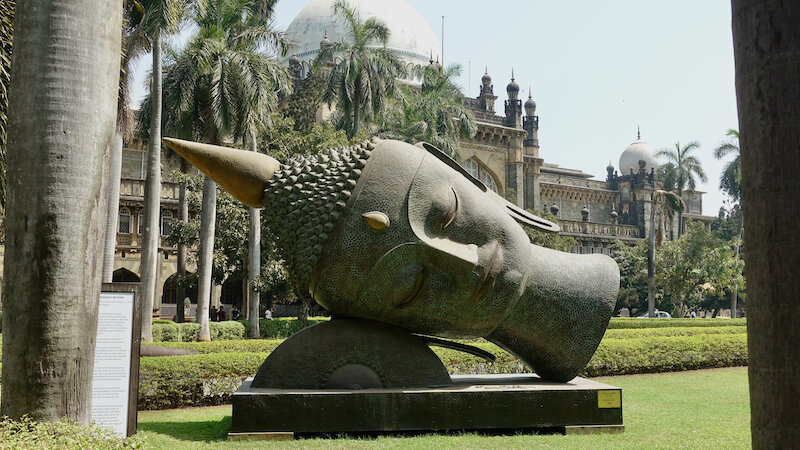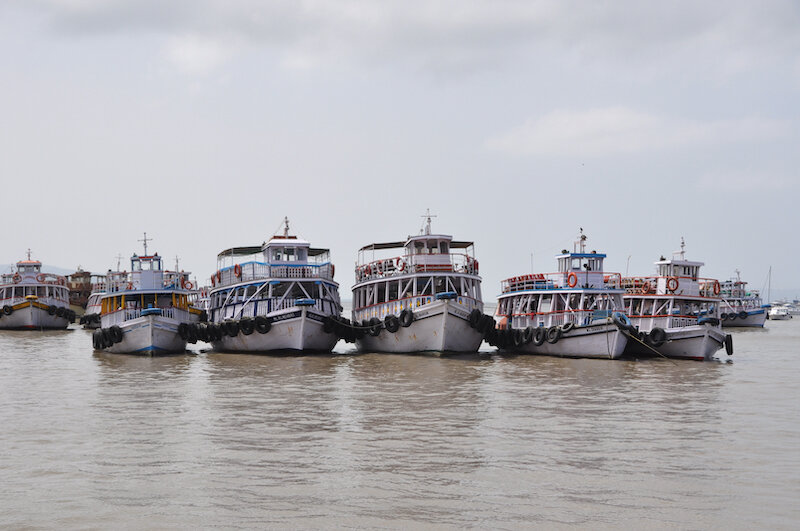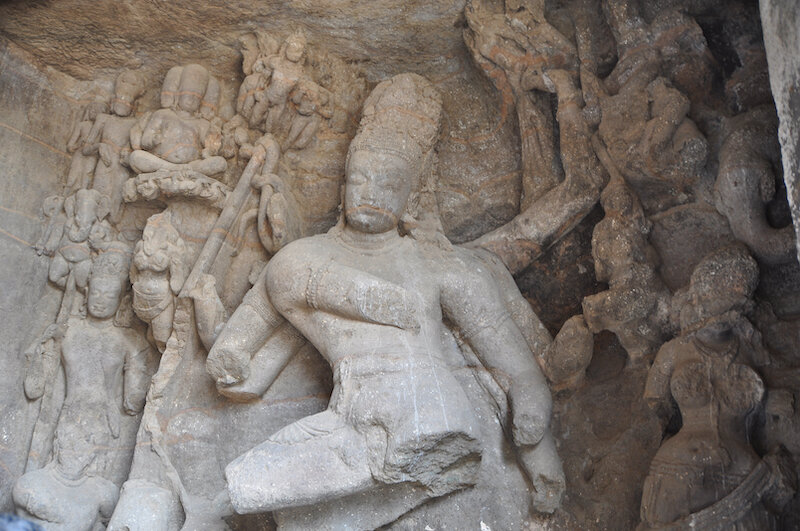Butter Chicken In Bombay
Bombay (now known as Mumbai, but that new name has never held the same romance for us) has always been a place where people came to make their fortunes. The Portuguese seized the swampy islands on which the city is located in 1534 and called the area Bom Bahia, the ‘good bay’. The name was based more on wishful thinking than reality, for the Portuguese fort faced constant attacks from surrounding Indian rulers and rival English and Dutch traders. The settlement was finally handed over to England as part of the dowry of Catherine of Braganza, sister of the Portuguese ruler, when she married King Charles II in 1662. The Lord Chancellor of England, a little confused in his geography, boasted of having acquired “the island of Bombay with the towns and castles therin which are within a very little distance of Brazil”.
Eventually having obtained directions to their new possession the English sent out a governor with instructions to build a great city and helpfully gave him a map of London to aid in planning. It may not have turned out exactly like London but by the time King George V visited in 1911, the first British monarch to land in India, Bombay was a bustling centre of commerce that had become one of the great cities of the British Empire. The monumental Gateway of India was erected to mark the King’s visit, and a short distance away was the elegant Taj Hotel, still one of the finest hotels in the world.
The history of a much earlier time, long before the arrival of Europeans, is preserved in the city museum, formerly named after the Prince of Wales (the future George V) but renamed, in what seems a deliberate attempt to baffle tourists, the Chhatrapati Shivaji Maharaj Vastu Sangrahalaya. The museum has exhibits on the art, archaeology and natural history of the region and is well worth a visit.
Chhatrapati Shivaji Maharaj, after whom the museum and many other landmarks in Bombay have been renamed, was the founder of the seventeenth century Maratha kingdom and a great hero whose statues are a frequent sight around the city. A gigantic statue of Shivaji, over 700 ft tall, is being constructed on an island off the coast of Bombay.
It is a well-worn cliche that Bombay is a city of contrasts where immense wealth and stark poverty rub against each other, but it is still hard to get used to the sights of shanties nestling up against luxury apartments. It is definitely not a place for people who are afraid of crowds, yet more people arrive every day from small towns and villages across India, dreaming of a chance to make their fortunes.
It is difficult to imagine how the city works, and yet it does. The Dhobi Ghat, the quarter where the city’s laundry gets done, has become a tourist attraction. Every day millions of pieces of clothing are brought here, washed and then returned to their owners in a miracle of organizational skill.
The only place where you can find a peaceful spot in Bombay is to leave the city and head out onto the sea. Floating on the tranquil water of the Arabian Sea the city skyline seems almost calm and contemplative.
There is an army of small boats that operate from the city harbour, carrying passengers down the coast and out to islands off the coast.
One of the most popular ferry destinations is Elephanta Island, a short boat ride away from the harbour. There you find Hindu temples that were carved out of solid rock in the sixth century. The sheer effort required to hew these massive columns out of stone is hard to imagine.
The temples are devoted to the Hindu god Shiva, and the walls are covered with images displaying various forms of the deity. The faces of the statues gaze down contemplatively, witness to the history that has flowed past in the many centuries they have stood there.
You’re going to need a break after all that sightseeing and what better place to revive yourself than another Bombay landmark - Leopold Cafe. A century ago, Irani cafés run by Zoroastrians from Iran who had immigrated to Bombay in the late 19th and early 20th centuries, were the best places to find a cheap, filling meal. There were hundreds across the city, with lazily turning ceiling fans suspended from high ceilings, marble topped tables, and famously brusque owners. Today only a handful survive, Leopold the best known among them. We had wonderfully strong iced coffee topped with ice cream that put new life into us!
We stopped off for lunch at Bademiya, one of the Bombay’s most iconic kabab places since1946. This place was recommended by my mother, who happens to be a staunch vegetarian! Bademiya’s famous mutton seekh kababs lived up to the hype; we found them delicious! Accompanied with butter chicken and fresh naan, they made a great lunch.
Butter Chicken, one of the most popular dishes of Indian cuisine needs no introduction. Try my easy, authentic recipe at home and never order takeout again! For a more pronounced smoky aroma, grill the chicken on the barbecue. Check out our full cooking video by clicking on the image above. For another variation of this dish, try Chicken Tikka Masala.
Bombay Butter Chicken
1 lb boneless, skinless chicken breasts
2 tbsp each: lemon juice, plain yogurt, oil
Salt to taste
1 tsp each, divided: ground cumin, ground coriander, paprika, garam masala, dried fenugreek leaves (kasoori methi)
1/2 tsp cayenne pepper, divided
2 tbsp oil
1/2 cup chopped onions
1 clove garlic, chopped
1/4 inch piece ginger, chopped
8 cashews (preferably raw)
1 can (28 oz or 796 ml) whole plum tomatoes (preferably San Marzano)
1 tbsp sugar
1/4 cup whipping cream
2 tbsp each: butter, chopped fresh coriander
Preheat oven to 400F. Line a baking tray with parchment paper.
Cut chicken into bite sized pieces. Place in a mixing bowl.
Add lemon juice, yogurt, oil and salt to chicken. Add half of all the spices. Mix well and marinate in refrigerator for 15 min or longer if desired.
Transfer chicken to parchment lined baking tray, spreading it evenly and bake for 10 min. Switch oven to broil setting and broil for another 2 min until chicken has picked up some charred spots (chicken will not be fully cooked at this point). Transfer chicken pieces to a bowl, discarding juices in the tray.
Meanwhile, warm 2 tbsp oil in deep skillet over medium heat. Add onions, garlic, ginger and cashews. Saute for 5 min until lightly browned. Switch off stove.
Add the tomatoes and stir to mix. Cool 5 min.
Transfer skillet contents to a blender, blend into a smooth sauce. Transfer sauce back to skillet and warm over low heat.
Add salt, sugar and remaining half tsp of all the spices. Stir gently to mix, then add reserved chicken. Cover and cook for 10 min for flavours to blend, stirring occasionally.
Stir in cream, butter and fresh coriander. Cook for 2 min to heat through, then transfer to a serving bowl.
Serves four














